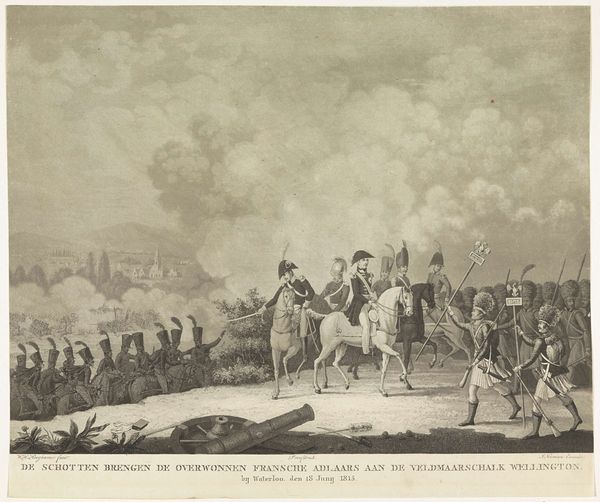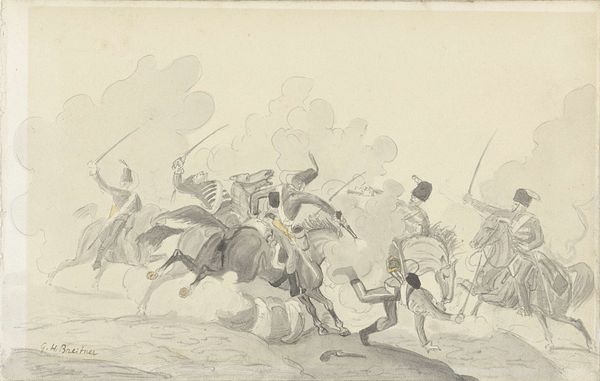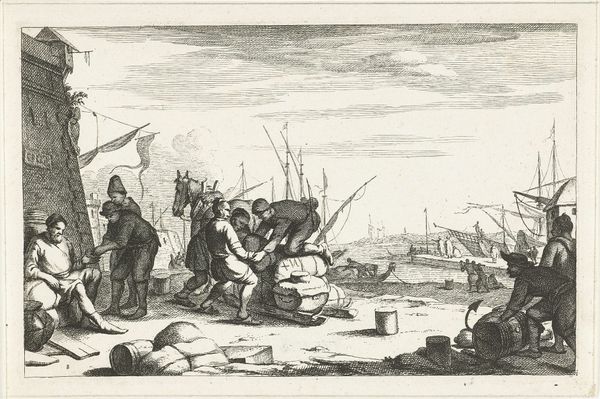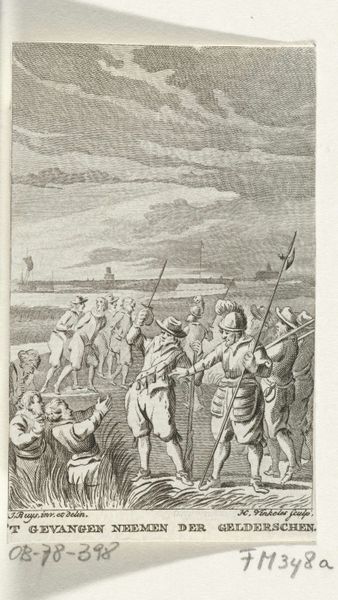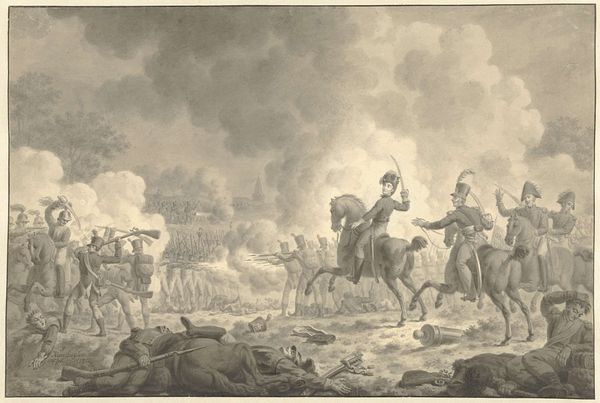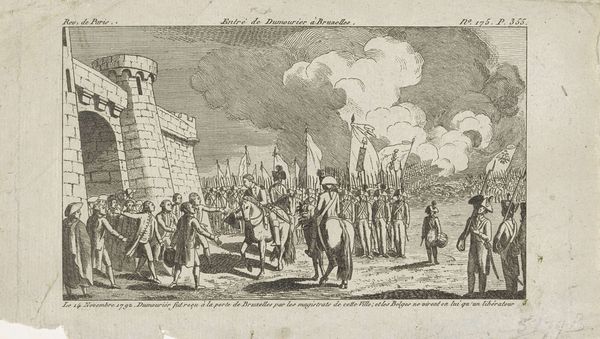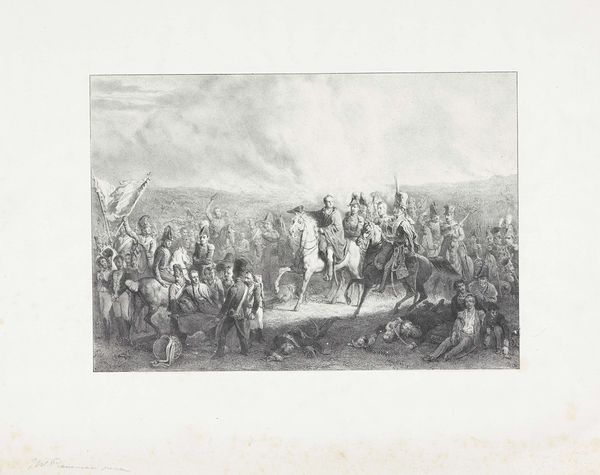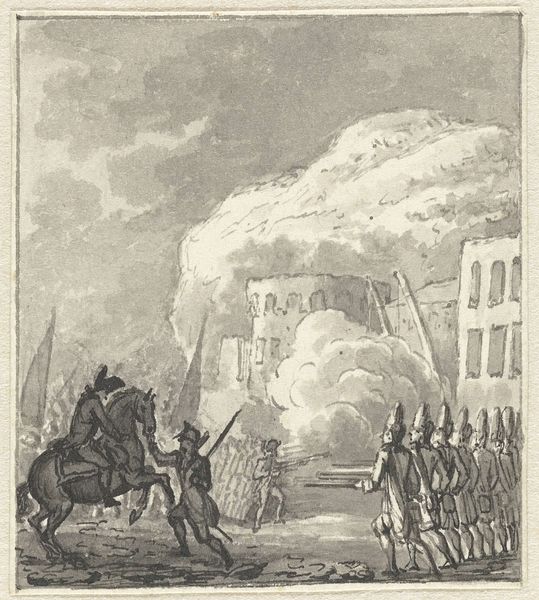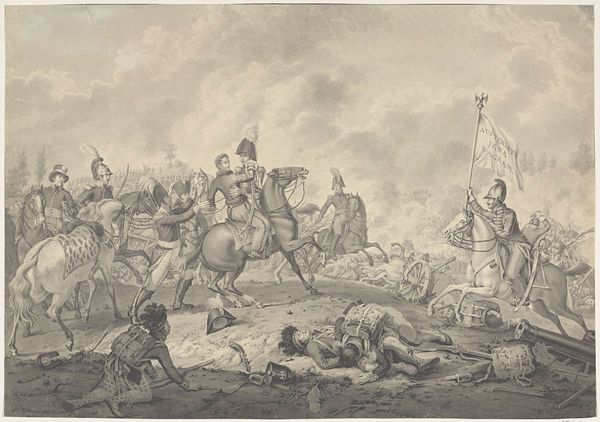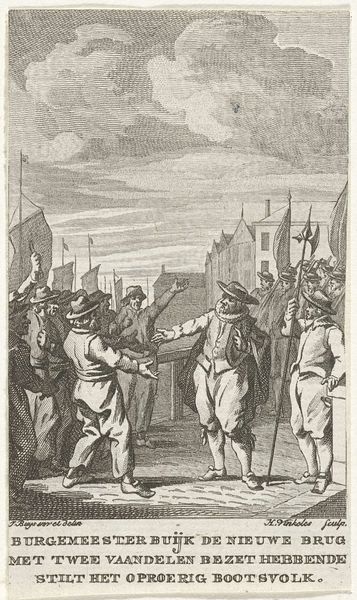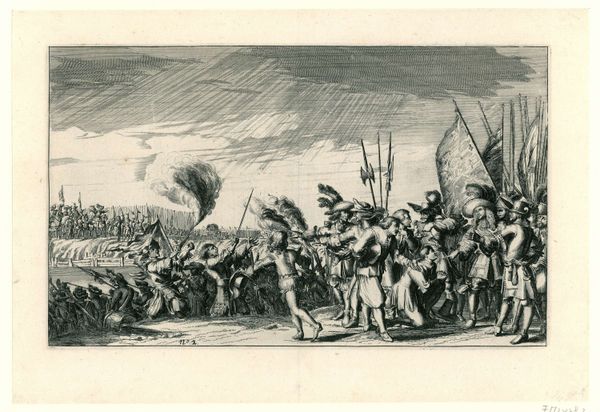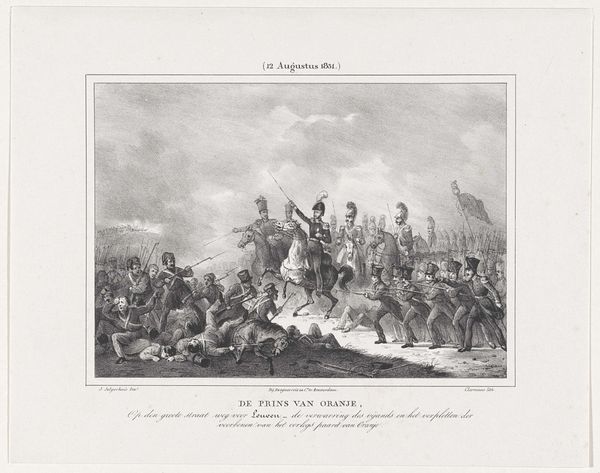
print, engraving
#
narrative-art
# print
#
figuration
#
romanticism
#
history-painting
#
engraving
Dimensions: height 81 mm, width 152 mm
Copyright: Rijks Museum: Open Domain
This print, titled "Slag bij Boutersem, 1831," was made anonymously in 1831, using a technique called etching. Etching involves coating a metal plate with wax, scratching an image into the wax, and then dipping the plate in acid, which bites away at the exposed metal. The plate is then inked and printed, transferring the image onto paper. The fineness of the lines we see here speaks to the skill of the etcher. The medium itself, printmaking, is critical to this artwork's social context. Prints like these were a form of mass media in the 19th century, allowing for the wide dissemination of images and ideas. They provide insight into how events like the Battle of Boutersem were perceived and communicated to the public. Looking closely at the image, you can see the incredible detail achieved through the etching process, from the expressions on the soldiers' faces to the smoke billowing from the cannons. This artwork shows us how materials, making, and context are crucial to understanding the full meaning of an artwork.
Comments
No comments
Be the first to comment and join the conversation on the ultimate creative platform.
